Okeanos was named one of Fast Company’s 2022 World Changing Ideas!
+
|
|||
|

Political support around the globe is mounting for a global plastics treaty. More than two thirds of the United Nations member nations including those in the EU, Africa, and the Pacific have signaled that they are open to signing an agreement that would be akin to the Paris Climate Accord. However, two enormous roadblocks may stand in the way…
In conversations about the potential treaty ahead of the G7 Summit the US and UK, had yet to signal their participation. Support is mounting for these countries, which are the biggest per capita waste producers, to sign on ahead of the U.N. Environment Assembly scheduled for February 2022.
The Environmental Investigations Agency (EIA) believes that the treaty would be “the only viable and effective means to tackle plastic pollution,” but in order to be effective, would have to include “monitoring and reporting to examine the extent of the problem; prevention; coordination; and technical and financial support, for example aid to developing nations.” It is not clear yet whether the global treaty would focus specifically on marine environments or attempt to tackle global plastic pollution as a whole.
Here at Okeanos, we are of the mindset that the only viable solution to the plastic pollution problem is a global one. This is why we’ve established a network of partners, compounders, and manufacturers around the globe, and introduced a solution that can be easily adopted from Miami to Mumbai. You can bet we’ll be tuned into the news as this story develops, and we welcome this potential new worldwide agreement.
Interested in learning more about becoming one of our global partners?
Email Partnerships@MadeFromStone.com
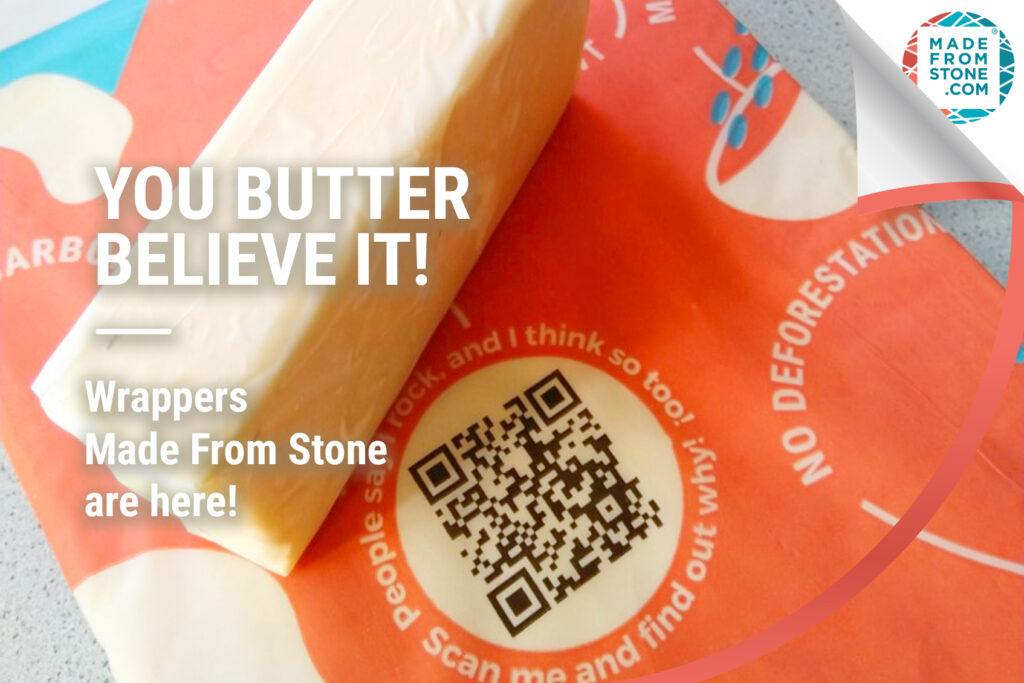
Have you gotten wrapped up in Made From Stone yet?
Our mono-material film replaces dry waxed paper and plastic sheeting with grease and tear resistant material that performs well in cold temperatures for refrigeration or storage in the freezer. Currently being tested on butter by NIYOG LIFE, owner Michael Lodge says “goodbye plastic – hello the future…. Thanks Okeanos.”
With this forward-thinking innovation, our patent-pending mono-material barrier film Made From Stone has fantastic dead-fold capabilities as well as great attributes for protecting food from UV light and oxygen exposure, keeping the product immaculate and fresh.
To wrap your products in our mono-material film,
contact trade@madefromstone.com today!
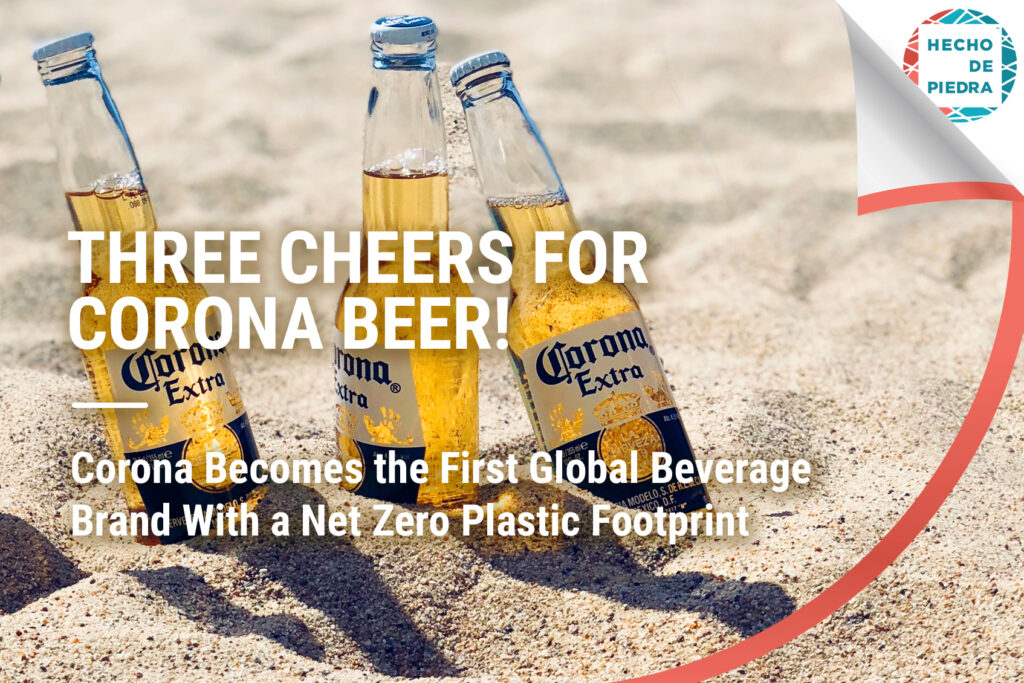
At this week’s Okeanos happy hour, Corona will be our drink of choice! The Mexican beer brand announced this week that they are the first global beverage brand to achieve a net zero plastic footprint. To mark the occasion, they released an augmented reality app called Plastic Reality, which allows users to calculate their plastic footprint after completing a short quiz about their habits, and then visually representing the quantity of plastic they consume through a virtual waterfall of plastic products pouring into their physical space.
South Pole, an independent climate solutions provider, evaluated all of Corona’s use of plastics across all of it’s brands from distribution to logistics, and measured them against the 3R Initiative’s Corporate Plastic Stewardship Guidelines. Following the Verra Plastic Waste Reduction Standard, South Pole was able to calculate the impact of the activities Corona took to mitigate plastic waste, including investment in a large Mexican recycling facility and a robust beach cleanup program that has collected plastic from more than 44 million square miles of beach. Thanks to these efforts, Corona now recovers more plastic than it’s plastic footprint.
We celebrate plastic reduction in all forms, believing that upstream solutions to reduce plastic in everyday products are the most meaningful way to make immediate change.
To learn more about reducing plastic in your products today with Made From Stone technology, contact trade@madefromstone.com
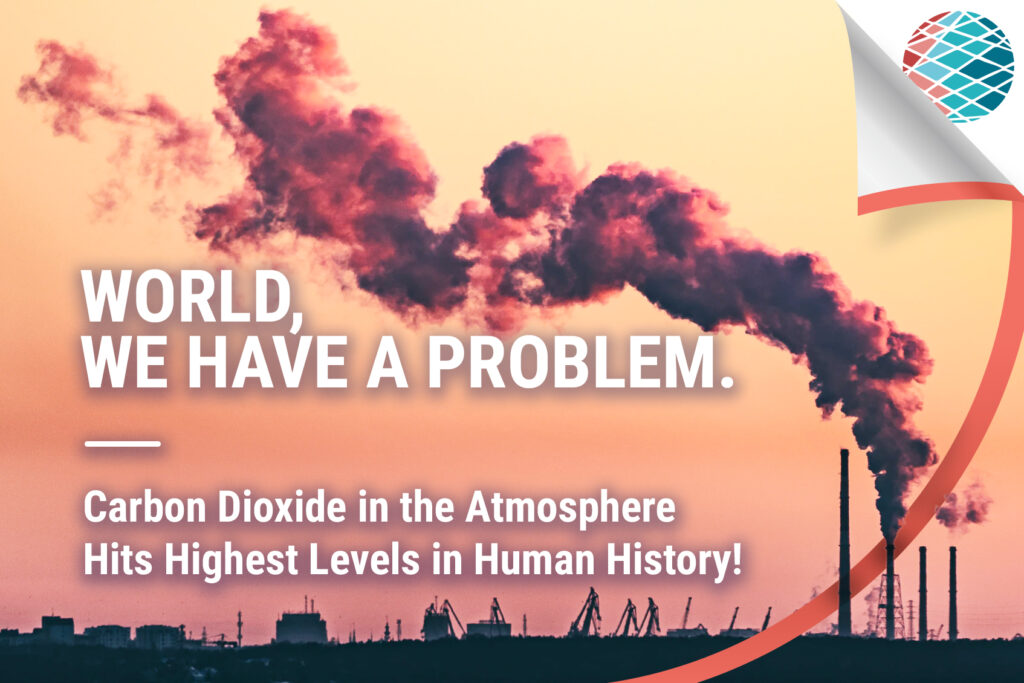
Last month, instruments at the NOAA Observatory atop the Mauna Loa volcano in Hawaii detected on average 419 parts of carbon dioxide per million – the highest levels ever recorded. This news may come as a surprise to many as pandemic-related shutdowns contributed to a 5.8% reduction in Carbon Dioxide over the previous year. However, humanity continues to emit carbon dioxide at a record pace.
Scientists agree that the only way to put a stop to and potentially reverse the damage we have done with emissions would be zeroing out emissions around the world. In a roadmap detailed by the International Energy Agency (IEA), “Countries would have to stop building new coal plants immediately, ban the sale of gasoline-powered vehicles by 2035 and install wind turbines and solar panels at an unprecedented rate.”
While extremely challenging, IEA believes that if we can get to net zero emissions, we can limit the global rise in temperature to 1.5 degrees Celsius. Unfortunately, we are not currently on track to hit this goal, with the total annual global emissions expected to rise at their second-fastest pace in 2021.
However, we believe that with the joint efforts of each country, company, and individual, we can get close. Today, Okeanos’ Made From Stone technology can be credited with a reduction of a product’s carbon footprint by as much as 67%.
To learn how you can immediately reduce your product’s carbon footprint, contact Trade@madefromstone.com
Did you know that our mighty ingredient, calcium carbonate, is also used to build some of the United States most famous buildings including the US Supreme Court? Watch the video below to learn more about how sustainable sourcing is at the core of the operation at our partner OMYA’s Vermont location, and how their responsibly sourced CaCO3 has been used for things that rock!
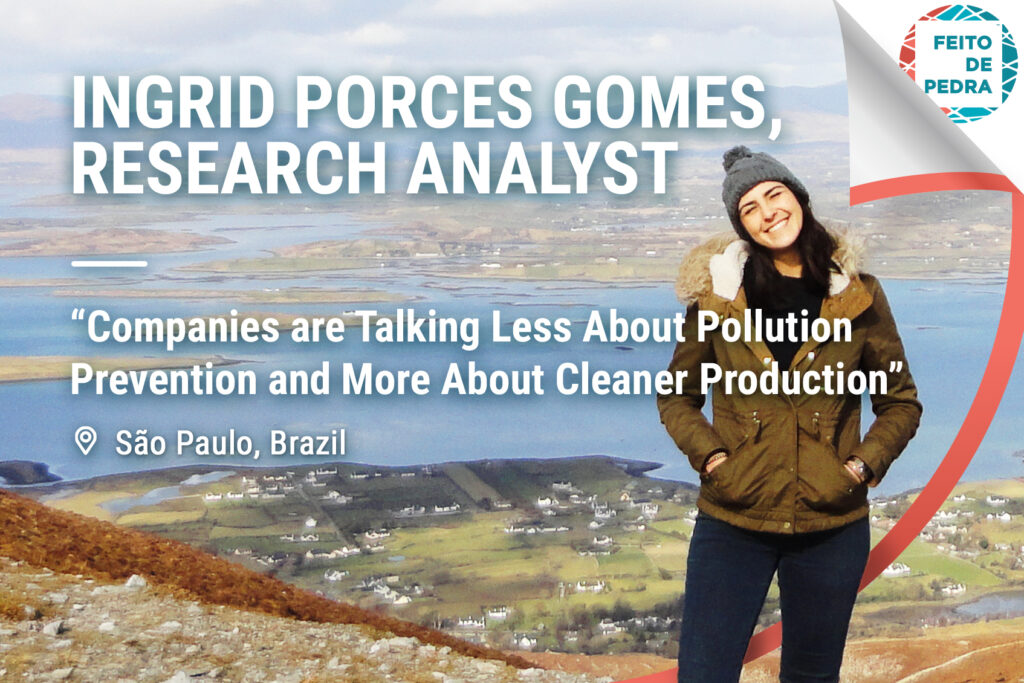
Our Rockstar Research Analyst Ingrid Porces breaks barriers as a woman in STEM, while breaking down the Life Cycle Analysis of our technology for our clients. Read more to learn about her passion for environmental engagement, and the must-see beach that’s on her bucket list.
Tell us about your childhood. Did you spend time by the ocean?
I have a brother who is one and a half years older, and we are very close. During my childhood, we spent a lot of time outside. We had many friends in the neighborhood, and I have fond memories of rushing home from school to run outside with my friends. All my family was born and raised in the countryside so during vacations, my parents took us to rural destinations, but as we got older, we would ask to go to the beach to experience something different. I always loved the beach, especially the schooner trips. Brazil has a very extensive coastline and I dream of exploring more soon.
Have you noticed an increase in environmental awareness there the last several years? Are people actively engaged in sustainability efforts?
Absolutely. Not only by individuals, but also by corporations. Companies are talking less about pollution prevention and more about cleaner production and ways to achieve a circular economy. Generation “Z”, the digital natives, are increasingly demanding about what they consume and the environmental agenda of their favorite brands. In the era of communication, 24-7 news, and access to information about sustainability are key tools to impact the mindset of society. Our lifestyles and incorrect use of our resources are becoming increasingly evident to us. I firmly believe that everyone should become more engaged. It’s everyone’s problem to solve.
You work on preparing the Life Cycle Assessments for our clients. Can you explain how understanding a product’s life cycle will help us to reduce our environmental footprint ?
The Life Cycle Assessment (LCA) has several applications including: gathering environmental information, quantifying environmental impacts, assessing the availability of resources and waste management techniques, and proposing opportunities to improve environmental aspects. All of these concepts are tied to the idea of “Eco-design”, a way to evaluate improvements in all stages of development of a product until its disposal. For example, the concept of dematerialization, when I can use less or no material for the same application. As a result, the reduction of environmental impact is linked to observing the information generated from the LCA to improve the environmental performance of the product.
What is the most interesting thing you’ve learned as part of the Okeanos LCA project ?
One of the things I most enjoyed learning as part of this team throughout this project is the fact that we currently have a lot of environmental data about different materials, but very little data that shows the real end-of-life impacts or social analysis of a product’s life cycle. Understanding the strengths and weaknesses that the whole world has been facing in this context gives me reasons to continue studying and deepening my knowledge on the subject.
If you could pick a body of water anywhere in the world to spend time near, where would it be?
Difficult choice, but I wouldn’t mind going to Phi Phi Island in Thailand. Many of the beaches there are great for diving and have crystal clear water. I think because of the movies I have seen there and the experiences of friends who have visited, this region is definitely on my bucket list.
What new skill or hobby did you pick up during quarantine?
During the pandemic, many people turned to the kitchen wanting to be bakers, and it was no different with me. I ended up buying a course on gluten-free pan breads and cakes and started testing several quick and healthy recipes. Also, I got back into playing guitar and practicing more, an old hobby that came back to stay also after the quarantine.
Now that the world is preparing to re-open, what is the thing you’re most looking forward to?
I miss many things, but I believe the main thing is being able to hug and be closer to my family and friends. I also look forward to being able to be with my co-workers and spend more time with them.
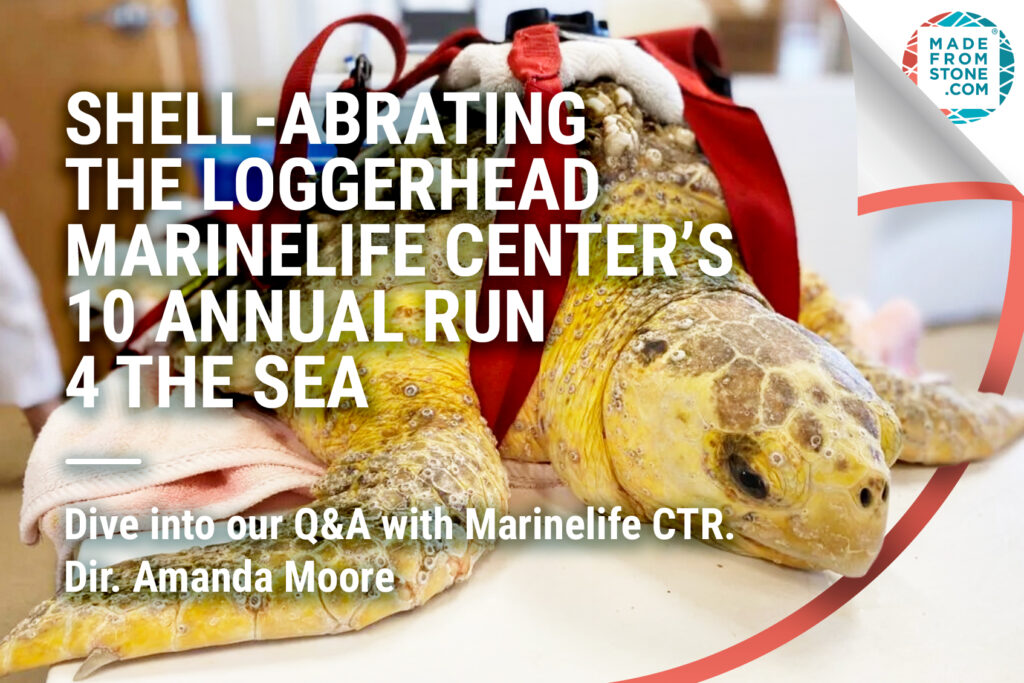
This month, Okeanos teammembers from all over the world participated in Loggerhead Marine Life Center’s annual Run 4 The Sea, a four mile virtual run to raise awareness for the amazing work that the team at LMC is doing to protect and rescue these amazing creatures. Click HERE (link to sarah’s race video) for a recap of this amazing event!
Before the race, we sat down with their Senior Marketing Manager Amanda Moore to learn more about the important research and recovery efforts that Loggerhead Marine Life Center has been spearheading in South Florida for the last 35 years.
How and why did the Loggerhead Marine Life Center start and how has it evolved?
More than 35 years ago, Eleanor Fletcher started what is now Loggerhead Marinelife Center (LMC). After moving down from the northeast, Eleanor Fletcher and her husband Robert started a real estate business in Juno Beach, FL. As she walked the beaches, Eleanor noticed the abundance of sea turtles nesting on our shores in Spring and Summer. She was curious about why so many hatchlings headed landward after hatching, rather than back to sea. As a result, she was granted a permit from FWC to conduct some of the earliest research on nesting and hatching sea turtles in the area. Soon, Eleanor launched what is now LMC.
In April 2007, the organization relocated to a new 12,000 square foot certified “green” facility and changed its name to Loggerhead Marinelife Center. Currently, the Center is undergoing another campus expansion, which will result in a 127% increase in square footage. The new campus will feature more sea turtle patient beds, an ICU, an expanded research laboratory, a STEM wet lab, and auditorium. Since the Center monitors and protects one of the most densely nested beaches in the world, it’s crucial for the Center’s campus to operate as a hub for sea turtle and ocean conservation.
What are the main reasons these sea turtles are coming in?
Sea turtle patients arrive at LMC for various reasons. However, many sea turtles arrive as a result of chronic debilitation, debris ingestion or entanglement, boat trike, or predator injury. Sea turtles face many natural challenges, but human-caused threats pose the greatest danger to them.
Has the increase in ocean awareness helped bring more people to your facilities in efforts to save the turtles?
Yes, the increase in ocean conservation awareness has helped draw more people to LMC and assist in our efforts to save sea turtles. In the past few years, we’ve noticed a wave of more people interested in marine conservation.
How have the sea turtles you’ve all seen been affected by plastic/ocean pollution?
Unfortunately, our hospital team has found that 100% of all post-hatchlings that arrive at our Center have ingested plastic. Regularly, we receive sea turtle patients that have ingested or become entangled in marine debris.
What does the education aspect of your work entail? How many students visit or zoom call in each year?
More than 360,000 guests visit LMC’s campus each year. In 2019, more than 900,000 individuals were reached through our virtual programs. Guests can participate in on campus events and activities or virtual events and activities, such as our Wild About Wildlife Virtual Camp and Run 4 The Sea event.
What are your top 3 recommendations to people to help keep our sea turtles safe and healthy in our oceans?
We encourage the public to be eco-conscious consumers by opting for items packaged and made sustainably, as well as reducing their use of single-use plastics. Additionally, we encourage the public to help remove debris from our natural environment by participating in cleanups and debris removal efforts. Everyone can assist by spreading awareness for sea turtle and ocean conservation, especially by helping LMC protect it’s 9.5 mile stretch of beach, which happens to be one of the most densely nested beaches in the world.
How did the Run 4 the Sea start?
Ten years ago, LMC staff members launched Run 4 the Sea as a children’s race held on the Friday evening before our annual Turtlefest. The race began as a one mile, fun run, which the kids participating in it loved. The following year we added a four mile run to the event. After realizing that the event was growing in popularity, we decided to move the race to its own weekend. Since moving it, we’ve always held it on Father’s Day weekend.
How many people typically participate and what do the proceeds help go toward?
When we have the race in person, we host over 800 participants. Run 4 The Sea is a well loved race and organized very well. This is our second year hosting the race entirely virtually, but we’ve continued to have support for the event. This year, we’ve had more than 700 participants register to run virtually. We are incredibly grateful for the amount of support we’ve received, especially since we were not able to host it in-person this year. All proceeds of the event directly benefit the critical care of our sea turtle patients.
News You Should Know:
| Cookie | Duration | Description |
|---|---|---|
| cookielawinfo-checkbox-analytics | 11 months | This cookie is set by GDPR Cookie Consent plugin. The cookie is used to store the user consent for the cookies in the category "Analytics". |
| cookielawinfo-checkbox-functional | 11 months | The cookie is set by GDPR cookie consent to record the user consent for the cookies in the category "Functional". |
| cookielawinfo-checkbox-necessary | 11 months | This cookie is set by GDPR Cookie Consent plugin. The cookies is used to store the user consent for the cookies in the category "Necessary". |
| cookielawinfo-checkbox-others | 11 months | This cookie is set by GDPR Cookie Consent plugin. The cookie is used to store the user consent for the cookies in the category "Other. |
| cookielawinfo-checkbox-performance | 11 months | This cookie is set by GDPR Cookie Consent plugin. The cookie is used to store the user consent for the cookies in the category "Performance". |
| viewed_cookie_policy | 11 months | The cookie is set by the GDPR Cookie Consent plugin and is used to store whether or not user has consented to the use of cookies. It does not store any personal data. |
